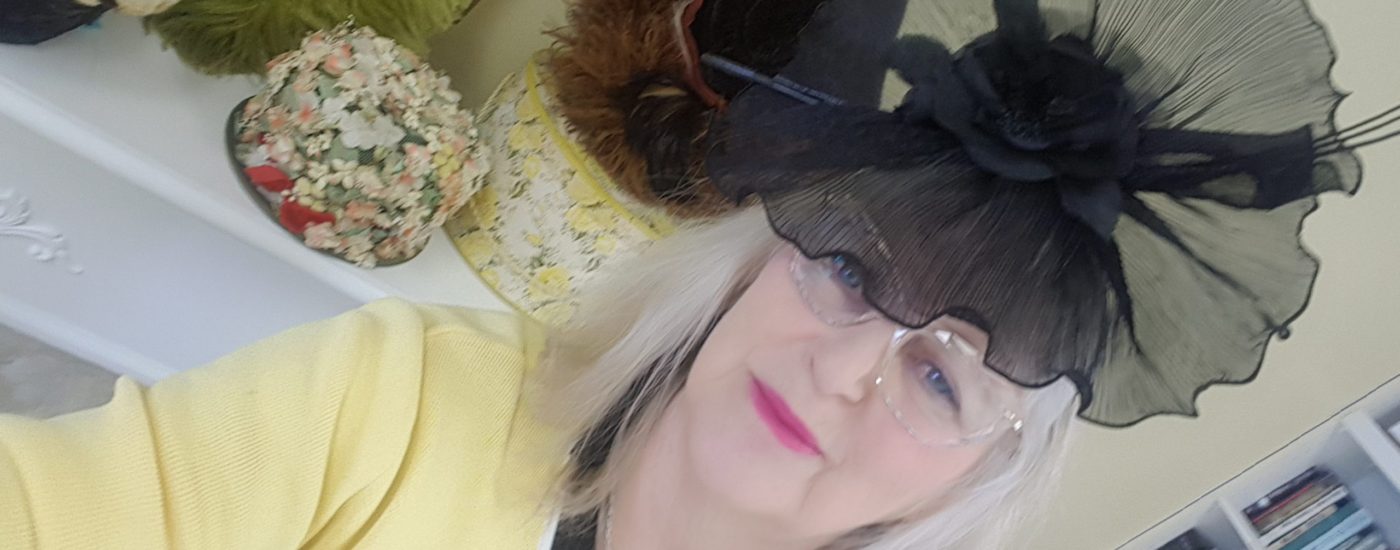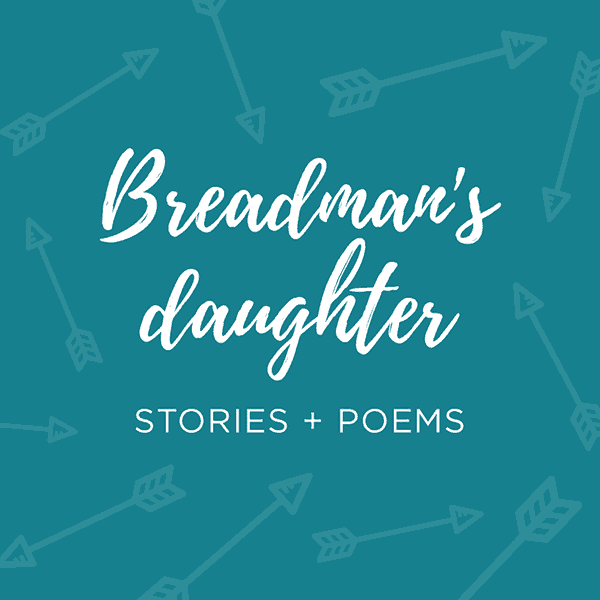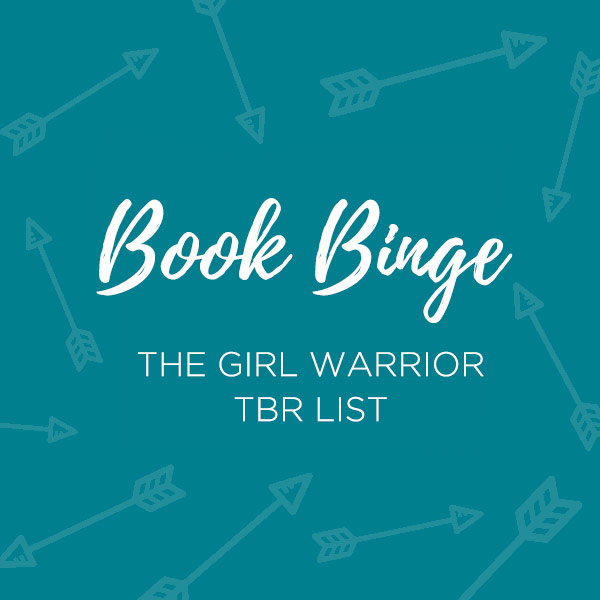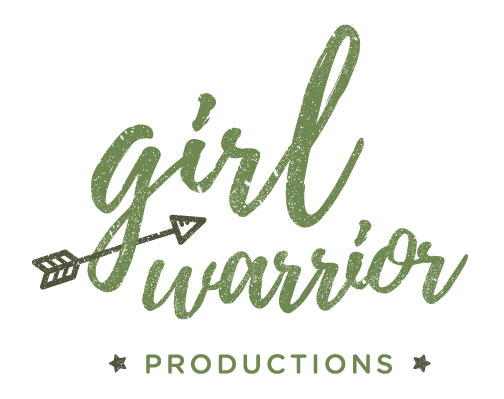Today we raise our fists high and put our hands together in celebration of our Feature Girl Warrior, author and vintage costume historian, Norma Shephard, the founder and director of the Mobile Millinery Museum, a unique traveling museum whose “working hats” have raised funds for diverse causes; from homeless teens in rural Ontario, to cancer research and diagnostic equipment, to a women’s and children’s shelter in Israel. Norma’s use of hats, shoes, and bridal gowns as cultural story blocks to prompt the telling of tales, myths, and legends transforms audience members into folklore informants, eager to share their own reminiscences. She has appeared on Canada A.M., CBC Morning, CBC Fresh Air, CBC Ontario Today, CH Morning Live, Breakfast Television, Canadian Living Television, This Morning Live, Main Street, CKCO, The Source, and Neighbour to Neighbour and has been featured in numerous print media. Norma is the subject of a biography by Patricia Boyle, entitled The Hat Lady. In 1985 she earned a Canadian Achiever’s Award for entrepreneurship and since founding her museum in 1999, has penned and photographed Accessorizing the Bride; Vintage Wedding Finery Through the Decades, 1000 Hats, In Step With Fashion: 200 Years of Shoe Styles, Lingerie; Two Centuries of Luscious Design and Dear Harry; The Firsthand Account of a World War I Infantryman. Col. Gordon Atkinson. As an editor and writing coach, Norma has assisted others in achieving their dream of being published. She has written for Canadian and American magazines, and her latest book Darlings of Dress; Children’s Costume 1860-1920 is available now from Schiffer Books and amazon.com. And to all these extraordinary accomplishments we tip our hats and say YES!
What makes you a Girl Warrior?
I have taken things that people have thrown away – garbage in some people’s eyes—and used them to educate, entertain, and raise funds for various causes.
Five years into your 18-year nursing career you were diagnosed with Lupus. How did you manage/cope with such a serious disease while working full-time in a demanding career?
I was diagnosed 6 months after the birth of my second child and carried on out of financial necessity. Nursing is a demanding job, but the patient interaction is very rewarding.
You’re the founder and director of the Mobile Millinery Museum. What inspired you to create such a unique museum?
Following a 6-month flare, I was doing a lot of walking for therapy and happened into a thrift store where I found 3 beautiful old Victorian hats in a bin of old shoes. I didn’t know what I had, but I knew that I loved them. I could identify with the fact that they were formerly beautiful and useful, but now cast-off as yesterday’s news. This was before hats had made a comeback, and even costume museums were rejecting millinery artifacts and exhibiting historic fashion without the hats that traditionally completed the outfit. Anyway, I cleaned them and hung them on the clothesline and kept an eye out for more. The neighbors probably thought I was nuts. 2500 hats and a whole lot of research later, here we are.
How do you use your vintage hats, shoes, and bridal gowns as cultural story blocks to prompt the telling of tales, myths, and legends?
Every hat tells a story – of when it was made, why it looks like it does, who might have worn it. Some of the best stories are memories that are sparked when people see a particular hat. One time, I was showing a hat made by Toronto designer Philip Warde, and after the performance, a former milliner, now in her 90s, was excited to tell me that she had taught Philip Warde to block hats and had been so inspired by my presentation that she wanted to restart her career. At the beginning, a local hospital heard about my collection and asked me to visit some patients, one of whom was the daughter of a milliner. I thought I would be talking informally to a handful of ladies but when I got to the hospital, I encountered a cafeteria-filled audience. My mother saw the panic on my face and suggested I invite some of the audience to model while I talked about the hats. Nurses told me later that some of the long-term care patients responded to the hats in a way that they had never responded to anything else. Word spread, and along the way people began to donate hats and tell me precious stories about having worn them.
Why is it important that we connect with history this way?
The historical aspect – placing costume within its social context – is most exciting to me. Take, for example, the way hats are so closely associated with the women’s movement. In phase one of the women’s movement, suffragettes wore the wide-brimmed big-crowned hats of the Edwardian era as a statement of status. The decorative hatpins so necessary to securing the hats atop up-swept hair were confiscated when the protesters were arrested. This was demeaning and insulting since the subtext was that they might use them in court as weapons.
Phase two of the women’s movement, in the 1960s, saw women discarding hats altogether because of the restrictive social imperatives around the wearing of a hat. Until about 1965, in most Canadian provinces, women were required by law to wear hats if they were attending court proceedings, even for simple driving violations.
Currently in phase three of the movement (Me Too), women are embracing pink pussy hats as an emblem of their solidarity.
You returned to school three years ago, and earned a BA Psychology degree and a Certificate of Academic Writing from Queen’s University. Congratulations! What was your biggest challenge and greatest triumph?
My biggest challenge was having to become less physically active while pursuing full-time studies. Freshman 15 is a real thing! I’m still struggling to get the extra weight off, but my biggest triumph was making the Dean’s list.
What’s the hardest decision you ever made?
The hardest decisions have always been the ones that I’ve had no choice over. Other than that, I’m pretty impulsive, and I don’t look back over choices I’ve made. Something good, something new, always comes from taking a step forward in any direction. It just isn’t usually what you thought it would be. And that’s kind of exciting.
You’re the subject of a biography by Patricia Boyle, entitled The Hat Lady. What effect did the publishing of the book have on your life? Where can we get a copy?
Pat’s book is a nice memoir of the early days of the museum. It is available from Volumes Direct (Kitchener ON) www.volumesdirect.com/detail.aspx?ID=1752, and possibly from amazon.
What do we need to know “for sure” about working hats?
The decline of millinery (some say demise) in the late 20th century was only a blip on the screen of social history. Hats will always be around. They are spirit boosters (it was actually debated in British and Canadian parliament during the second world war as to whether they should be rationed), and are one of the most personal historical artifacts we have.
What would you say to your younger Girl Warrior?
I would tell her not to worry about what other people think. I was always hopelessly shy, terrified of authority figures, and would never have believed that I could now speak to an audience of 500 people without fainting dead away; when back then, I used to get nervous speaking to people one on one.
What would you say to future Girl Warriors looking for inspiration?
Look inside for your inspiration, write down your dreams – the literal (another passion of mine) and the figurative.
Who is/are your Girl Warrior hero(s) and why?
My daughters, Ardra and Corinne are definite heroes of mine. I am particularly impressed with the manner with which they each handle their autoimmune health issues. Artist and designer Maryam Keyhani is also a hero of mine. I admire her free spirited approach to fashion, and the boldness of her hat-wearing.
What makes you laugh uncontrollably? Cry out all the tears?
Stuff my husband says, for sure, but the uncontrollable laughter comes when I’m reminiscing with certain friends about the absurdity of life, or some crazy thing we’ve done together, or some crazy scheme we’ve cooked up that’s totally not doable. When I see my friend Judy practically falling off a chair from laughter, that’s when the tears flow, and my insides get a good workout.
If a hat were named after you, what would it be called?
It would be called “The Nerm”. That’s a nickname certain people, who know me well and really get me, call me. And it’s a nickname I love. My husband came up with the name when we were in high school. He used to joke that if the word “worm” is pronounced “werm”, then “Norm” should be pronounced “Nerm”. The friends that I laugh with the most call me Nerm, my son calls me Nerm, and so does his 3-year old daughter. A hat called “The Nerm” would be the ultimate tribute.
To learn more about Norma and her vintage millinery, head on over to her website: www.hatsinmind.com
Follow her on Instagram: https://www.instagram.com/normashephard/
And Facebook: https://www.facebook.com/hatshows/
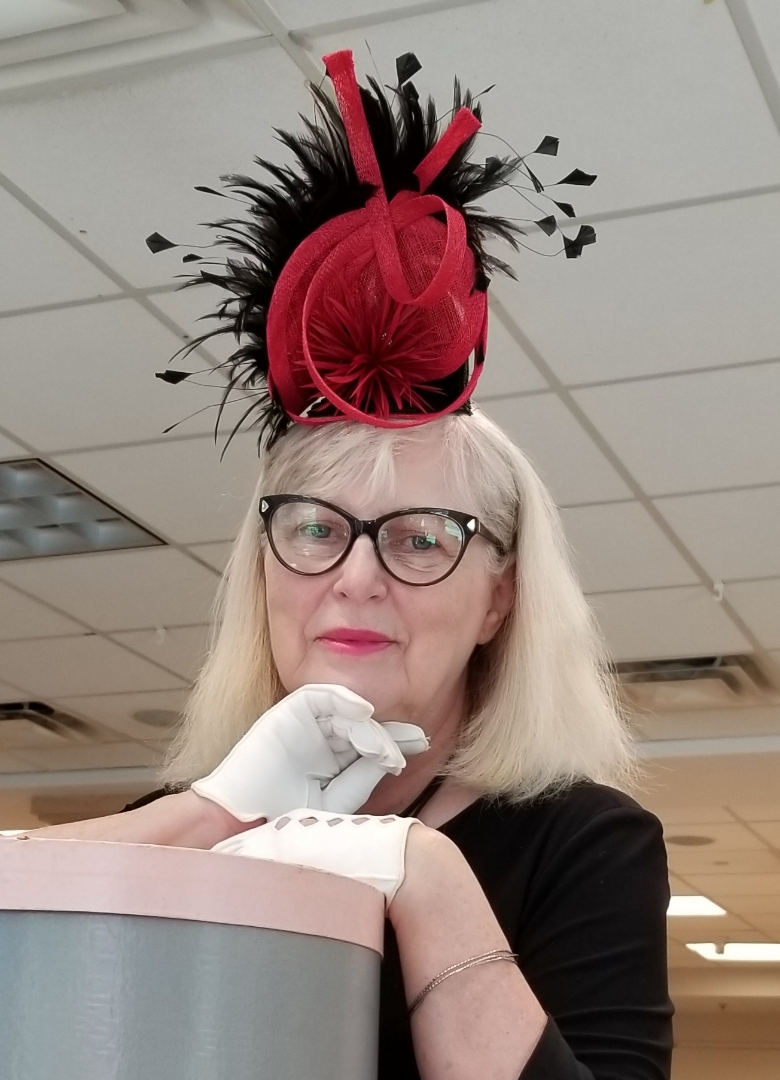
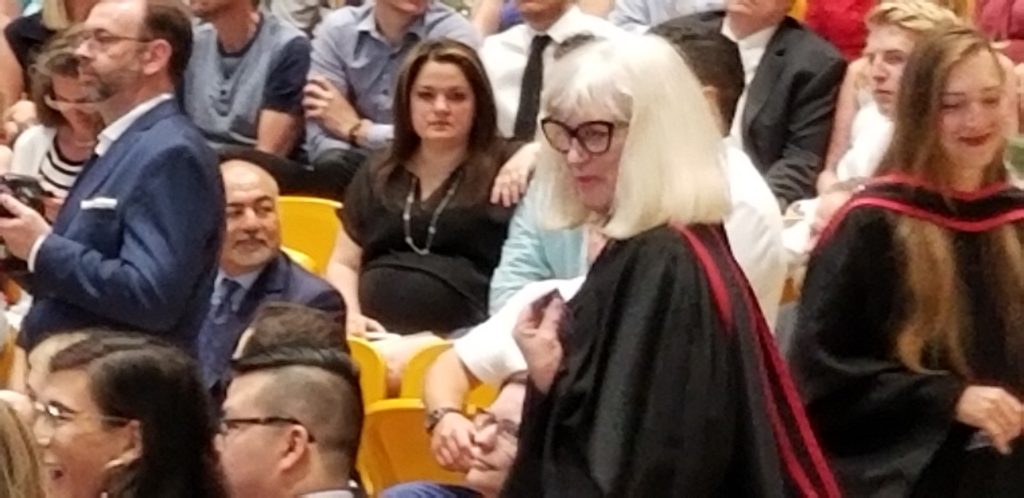
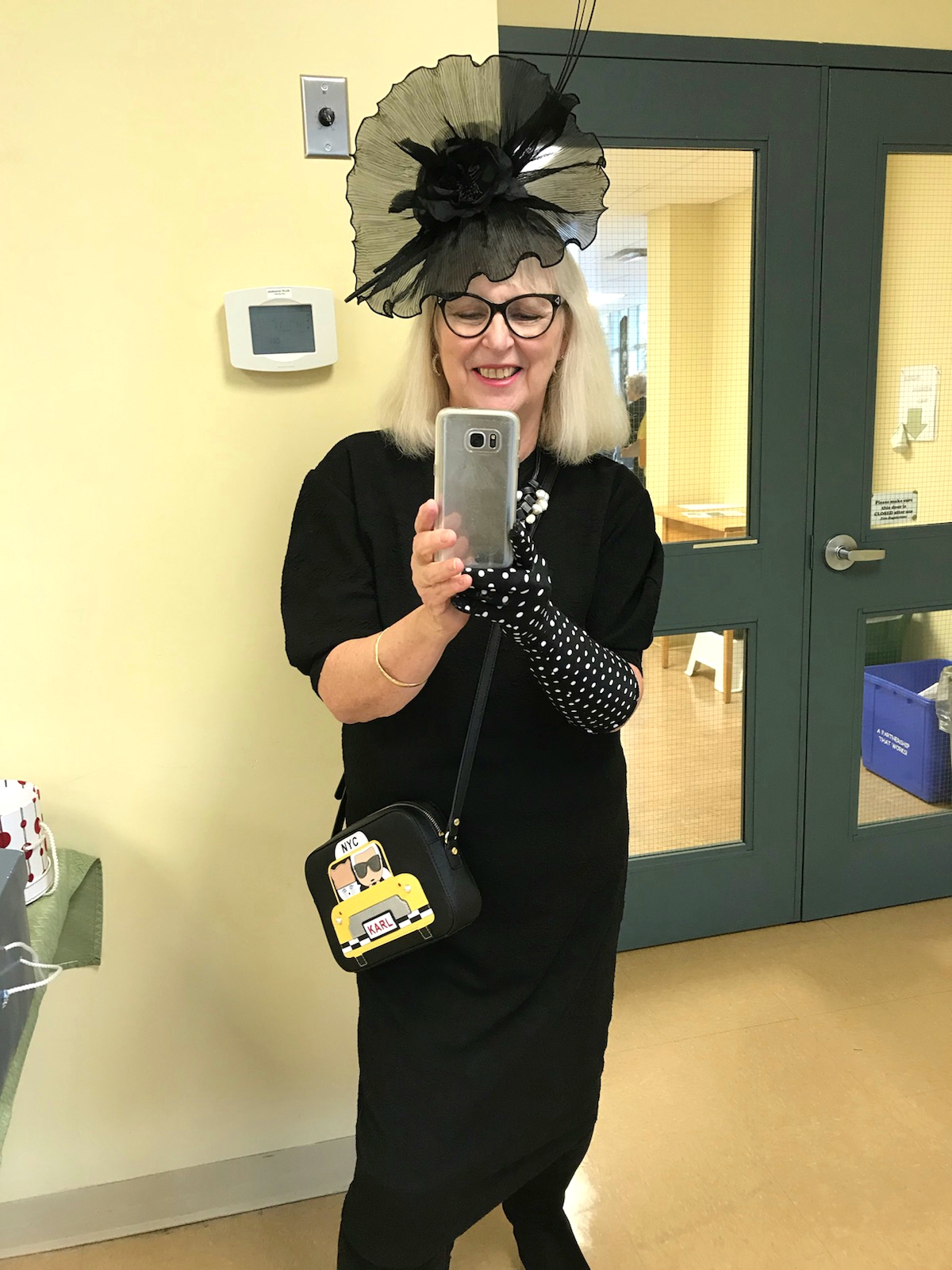
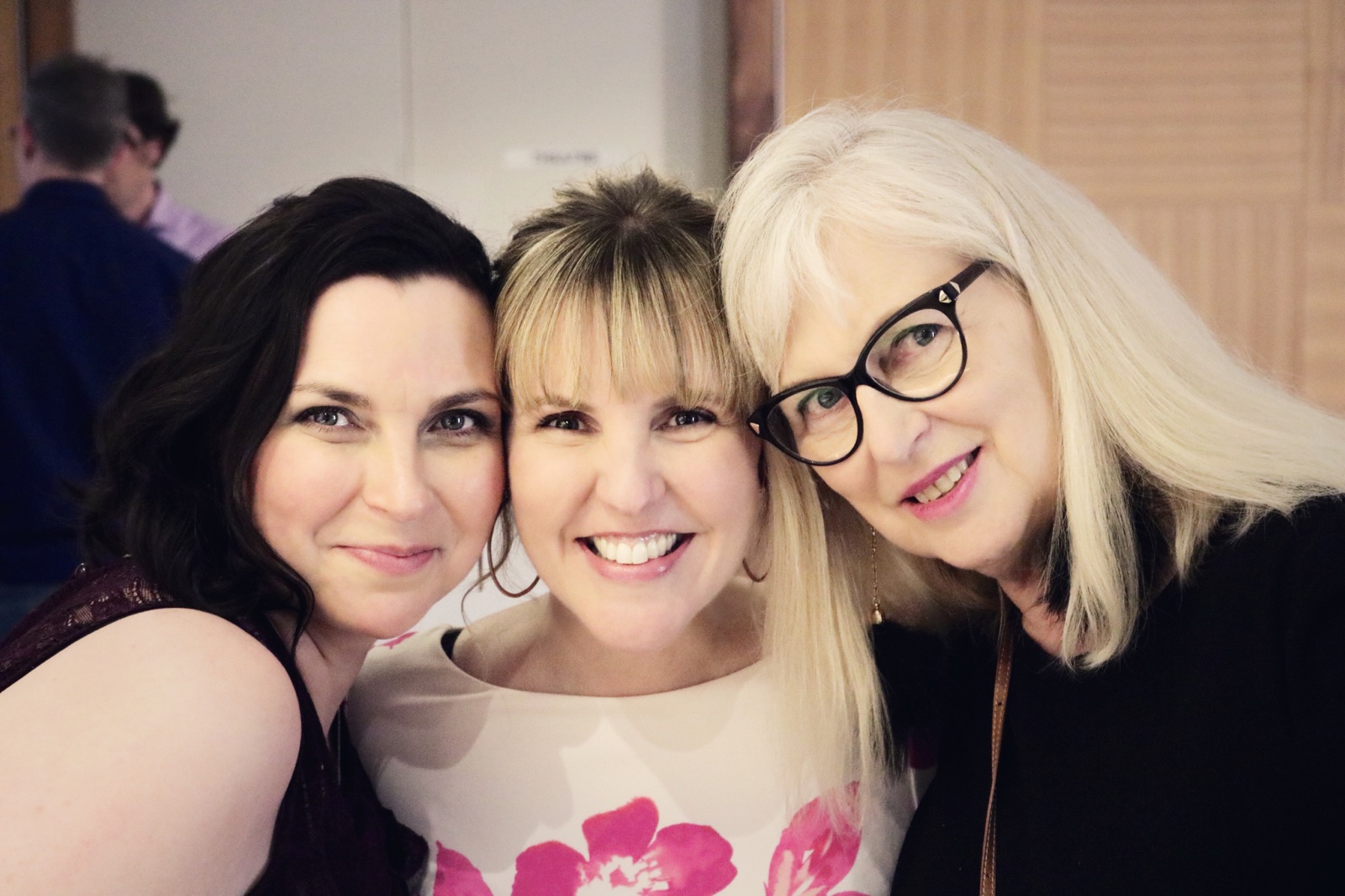
All hats worn in the above photos of Norma by MARIA CURCIC MILLINERY.

